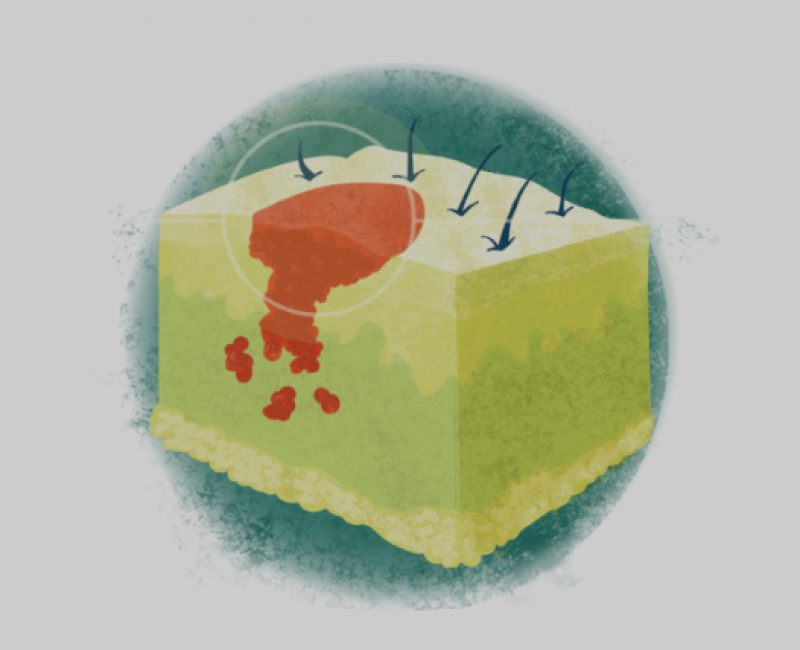Melanoma can hide in plain sight, obscured by multiple types of benign skin lesions, growths, and blemishes. Recognizing and separating the “noise” in your skin landscape can help you home in on truly suspicious lesions, including melanoma.
The first line of defense against melanoma is a regular skin self-exam, which can be performed at home without special equipment or need for assistance.
Basic Skin Exam
The American Cancer Society recommends monthly skin exams, especially for people who have an increased risk of developing skin cancer. A skin self-exam can be performed whenever it’s convenient, but an obvious time is before or after a shower or bath.
When examining the skin for the first time, spend a little more time and try to learn the patterns of moles, freckles, and other marks on the skin so that changes may stand out more during subsequent self-exams.
The following are the recommended steps:
Facing a mirror in a well-lighted room, check your face, ears, neck, chest, and abdomen. Women should raise their breasts to check underneath. Inspect your underarms, the tops and palms of your hands, between your fingers, and under your fingernails
While sitting, inspect your thighs, shins, tops of your feet, between your toes, and under the toenails. Use a hand-held mirror to check the soles of your feet and the backs of your calves and thighs, one leg at a time
Use the hand mirror to check the buttocks, groin, and genitals. Using a hand or wall mirror, inspect your upper and lower back and the back of your neck and ears
Part your hair and carefully check your scalp
Regular skin exams can help train you to distinguish ordinary lesions or growths from suspicious ones. Whenever in doubt, ask your healthcare provider.
Common Moles
Most moles have a uniform appearance: brown, round, flat, or slightly raised, with no change in appearance from month to month. Usually, they are no larger than a pencil eraser and may be smaller.
Moles appear most often above the waist on skin areas exposed to sunlight. Rarely, a common mole will evolve into melanoma. People with many moles (50 or more) have an increased risk of developing melanoma.
Atypical Moles
Also known as a dysplastic nevi (nevus, singular), these skin growths differ in one or more ways from a common mole: larger size, different color, irregular shape or texture.
CLIN INFECT DIS
Genomic Analysis of Group B Streptococcus from Neonatal Sepsis Reveals CC17 Clonal Expansion and Insights into Virulence- and Resistance-Associated Traits After Intrapartum Antibiotic Prophylaxis.
EPILEPSIA
Efficacy, safety, and economic impact of diazepam suppositories with as-needed acetaminophen for prevention of seizure recurrence during the same fever episode in children with suspected simple febrile seizures.
BLOOD
Thrombocytopenia and splenic platelet directed immune responses after intravenous ChAdOx1 nCov-19 administration.
The vast majority of atypical moles remain stable over time and have a low risk of evolving into melanoma. People who have five or more atypical moles have a slightly higher risk of developing melanoma.
Congenital Moles
Some people are born with one or more moles, known as congenital moles. They vary in size from small to quite large and have a range of possible colors. A congenital mole increases the likelihood of melanoma, particularly for a person with multiple congenital moles.
The lesions can appear anywhere on the body but are most common on the trunk and extremities.
Actinic Keratoses
Actinic keratoses (AKs) are precancerous lesions that arise on skin areas that have the most exposure to sunlight: the face, ears, balding scalp, hands, neck, and lips. AKs usually occur after age 40 and often have a subtle appearance, such as a small pink area of skin that is rough or scaly and painful when rubbed or scratched.
Because they have an increased risk of turning into skin cancer, AKs should be evaluated right away by a skin specialist.
Melanoma
Melanoma may have an appearance that overlaps with benign skin lesions, particularly moles. Unlike moles, though, melanoma’s appearance may change from one skin exam to another.
Most melanomas are dark brown or black, but they can also be various shades of pink, tan, or blue, or even be clear. An irregular shape or border, non-uniform color, and non-matching sides are other common characteristics. Melanomas may crack, bleed, or ooze.
If you have a skin growth that exhibits any of these characteristics, have it evaluated by a skin specialist.


































































































